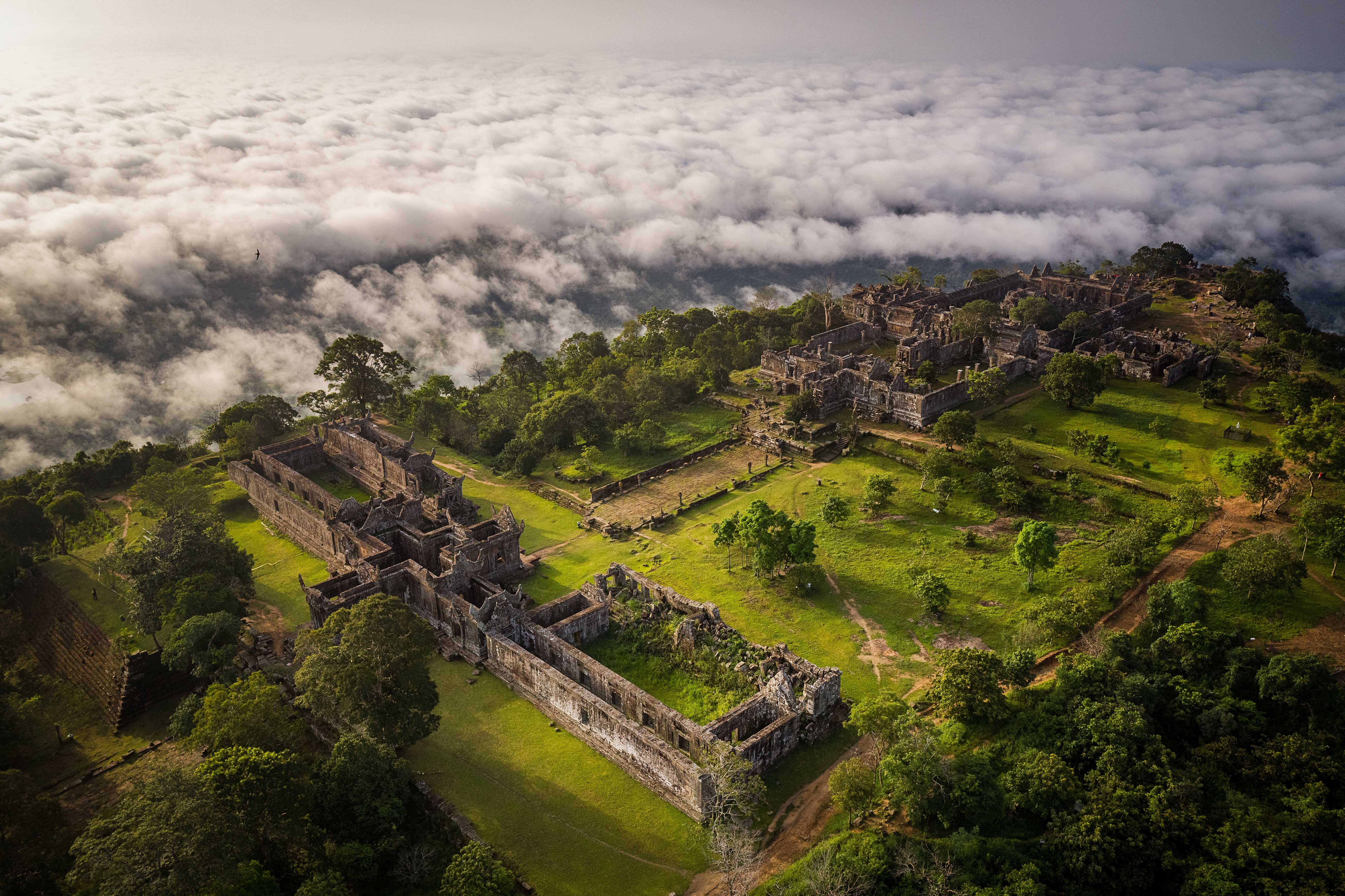

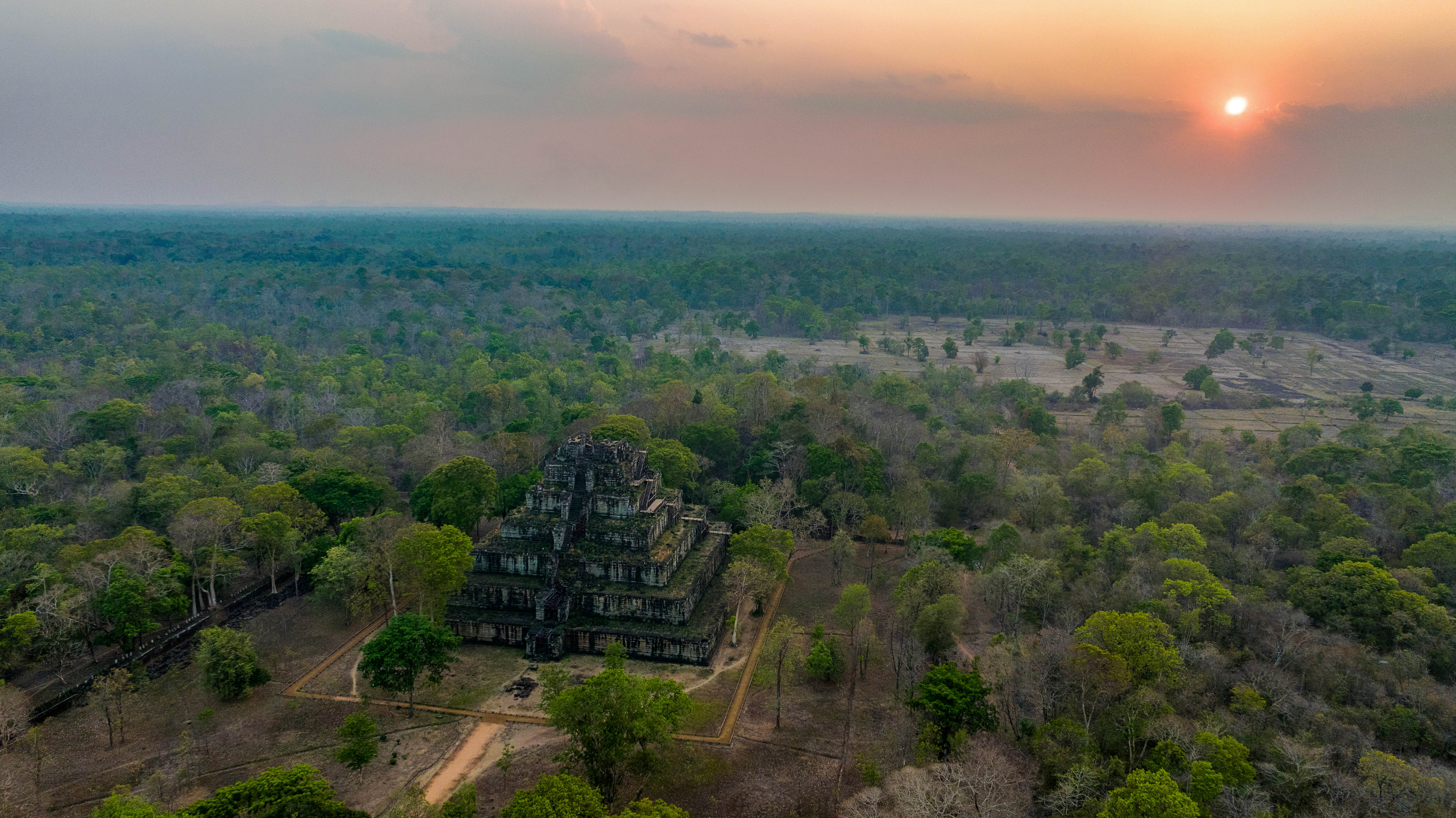
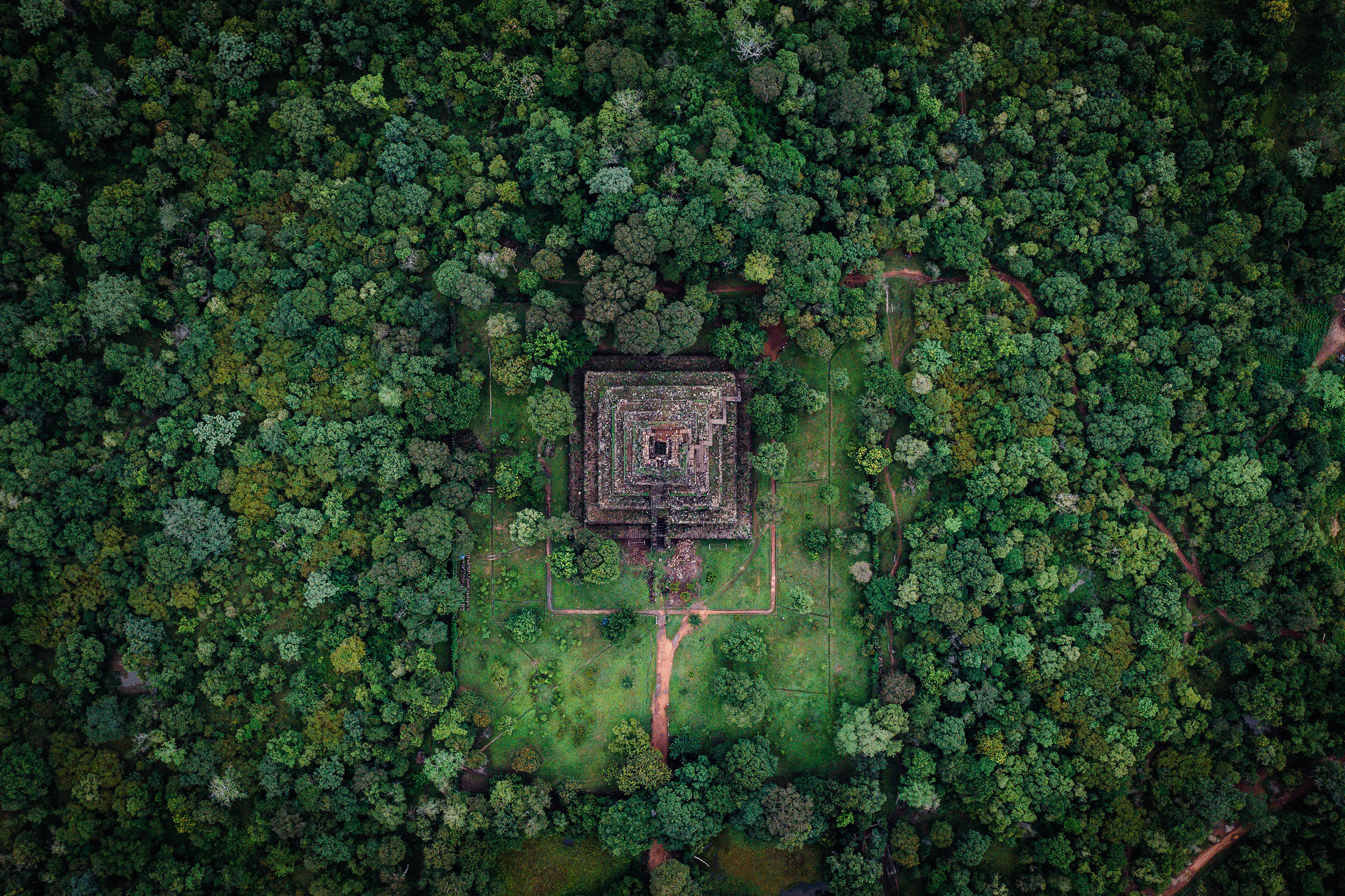
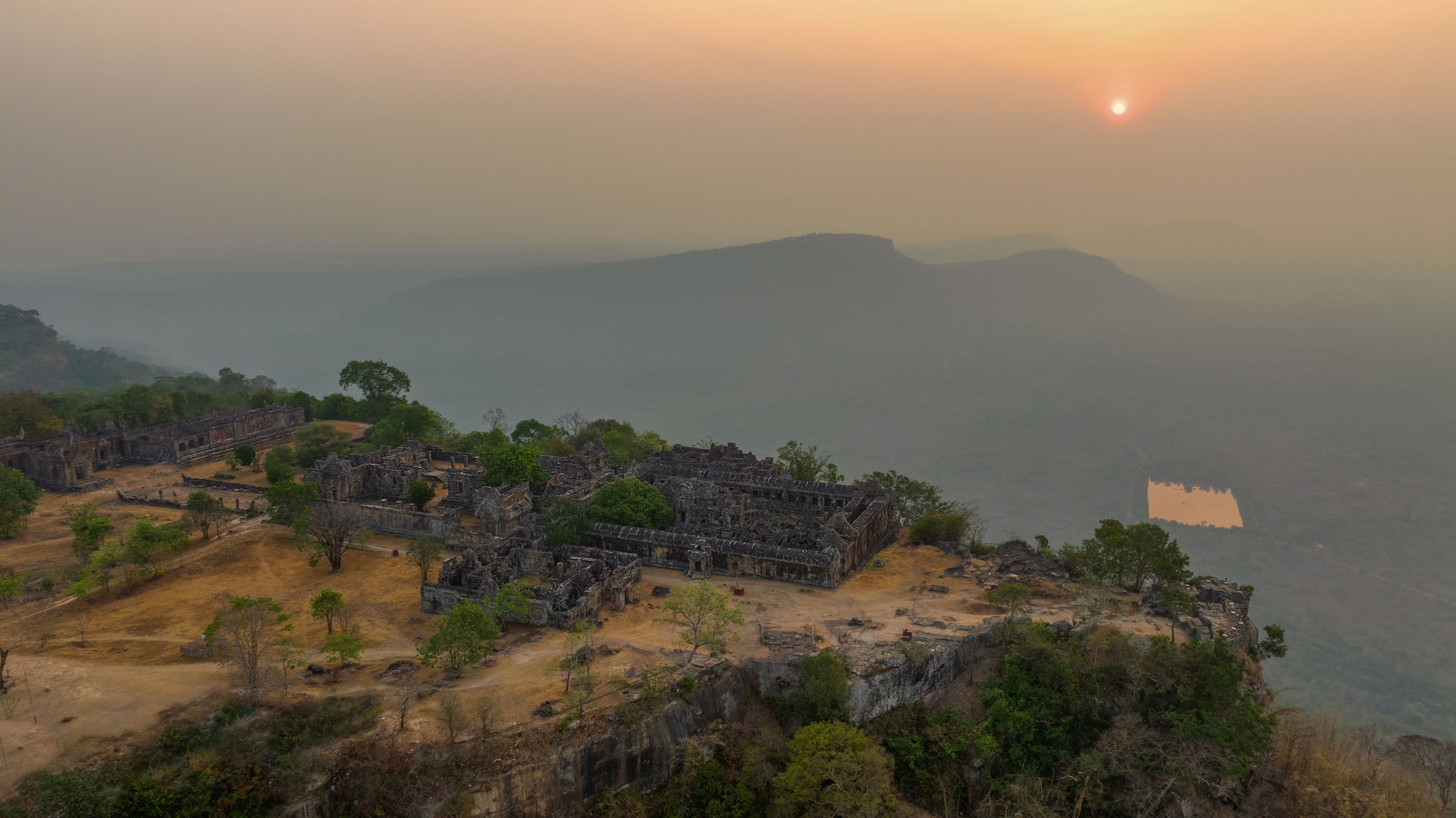
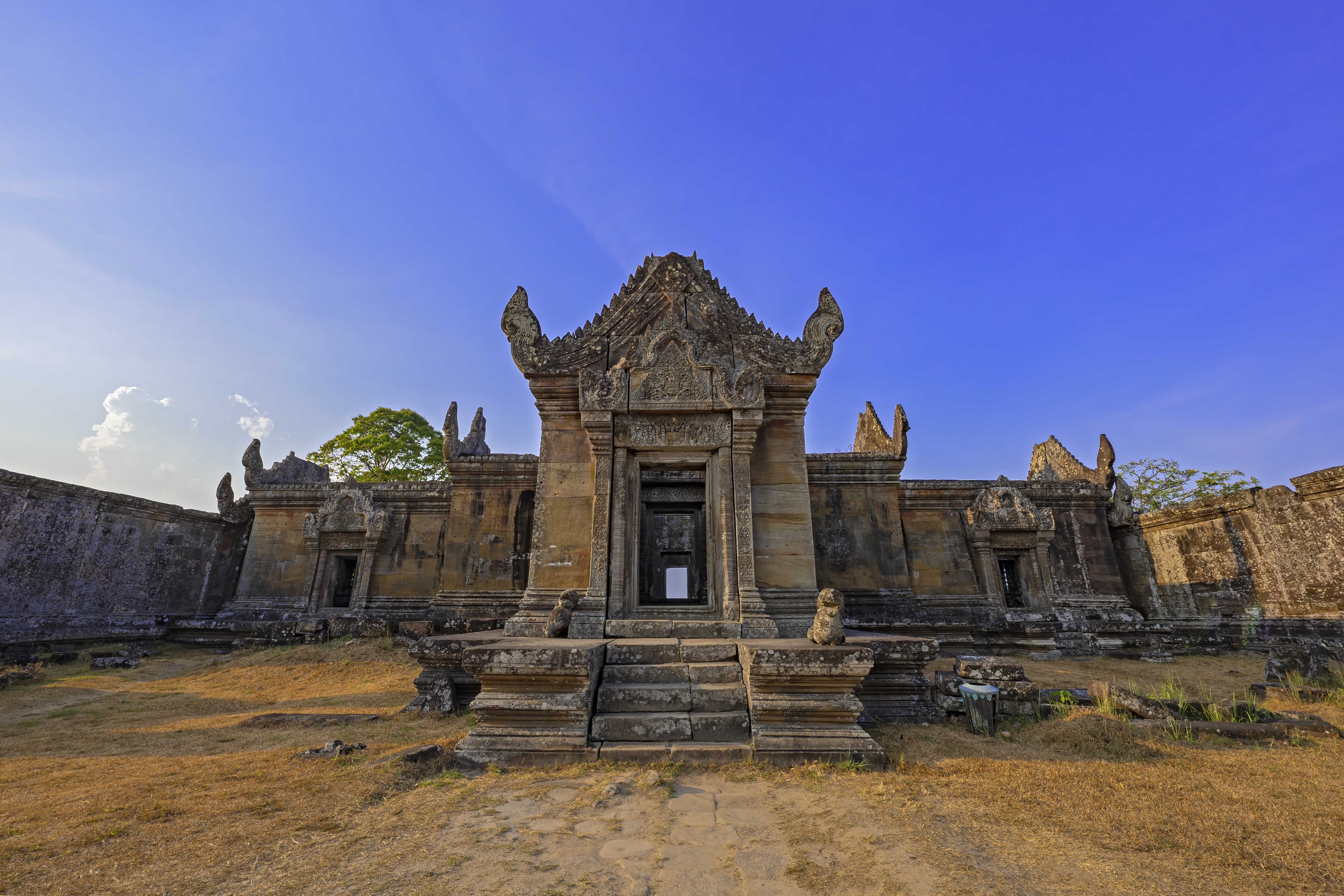

With a total size of 8,789.43 ha, the Koh Ker Archaeological Site (KKAS) is predominantly dominated by deciduous forest type, with small patches of bamboo groves along certain streams, citing O Russey stream (bamboo stream). Based on species dominant and other counterpart species, this forest ecosystem is further classified into two forest types - Deciduous Dipterocarp Forest (DDF) with main species of Shorea obtusa, S. siemensis, Dipterocarpus intricatus along with many counterpart species, and Mixed Deciduous Forest (MDF) dominated by Lagerstroemia tomemtosa. This type of forest ecosystem provides spectacular greenery landscape in the rainy season, but it gradually turns to brown at the start of the dry season. Anthropogenic-induced forest fire occurs frequently in the dry season in this forest type due to very dry condition and thick biomass as a result of dead leaves and vegetation on the ground.
This forest ecosystem provides a diversity of forest resources to support livelihood of local community dwelling within and adjacent to KKAS. Key forest products of mushrooms, bamboo shoots, rattan shoot, wild yam, edible leaves and fruits, bamboo, medicinal plants as well as fishes and amphibian are collected for both household consumption and sale to both domestic and international markets. So, sustainable conservation and protection of forest ecosystem at KKAS not only provides beauty to the temples, provides ecosystem services but also contributes to local economy.